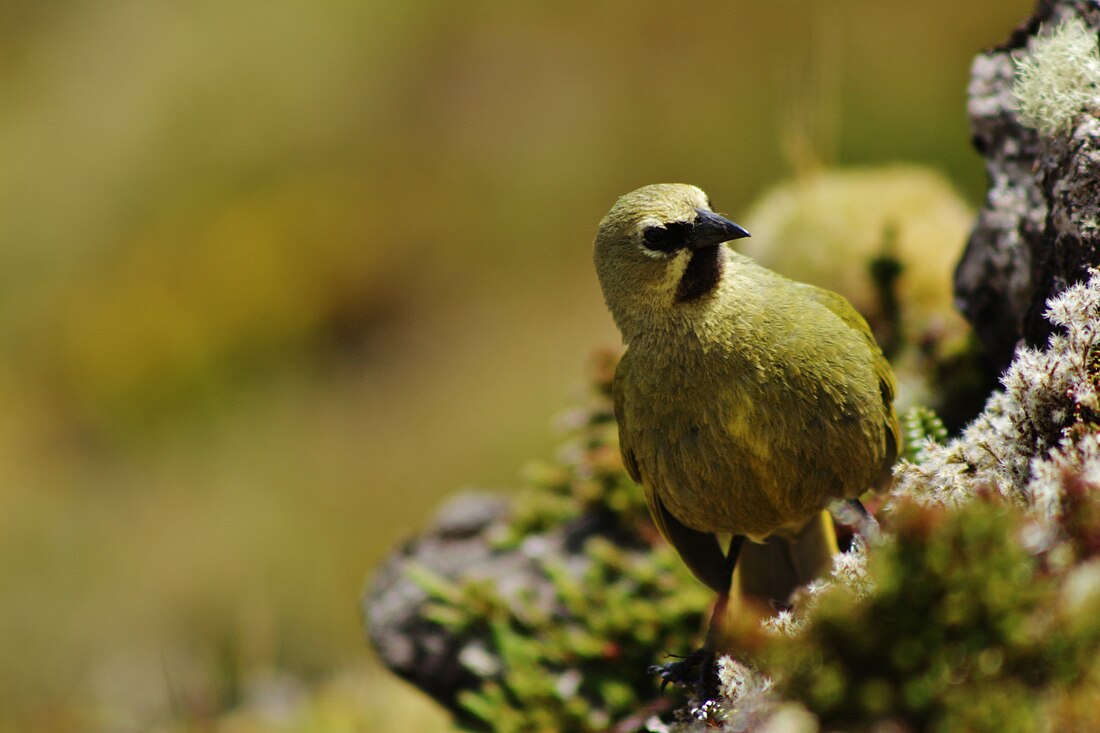The Gough finch (Rowettia goughensis) or Gough bunting, is a critically endangered species of songbird.
| Gough finch | |
|---|---|
 | |
| Male on Gough Island | |
| Scientific classification | |
| Domain: | Eukaryota |
| Kingdom: | Animalia |
| Phylum: | Chordata |
| Class: | Aves |
| Order: | Passeriformes |
| Family: | Thraupidae |
| Genus: | Rowettia Lowe, 1923 |
| Species: | R. goughensis |
| Binomial name | |
| Rowettia goughensis (Clarke, WE, 1904) | |
 | |
| Synonyms | |
|
Nesospiza goughensis (protonym) | |
Taxonomy
The Gough finch was formally described in 1904 by the British ornithologist William Eagle Clarke from a specimen collected on Gough Island in the South Atlantic. Clarke coined the binomial name Nesospiza goughensis.[2] The Gough finch is now the only species placed in the genus Rowettia that was introduced in 1923 by the English ornithologist Percy Lowe.[3][4] The genus name was chosen to honour John Quiller Rowett, an English businessman and the sponsor of the Shackleton–Rowett Expedition.[5] The Gough finch was traditionally considered to be a bunting in the family Emberizidae,[6] but molecular phylogenetic studies have shown that it is a member of the subfamily Diglossinae in the tanager family Thraupidae and is sister to a clade containing birds in the genus Melanodera.[7] The species is monotypic: no subspecies are recognised.[4]
Another species of finch was described from Gough Island, Nesospiza jessiae, in 1904. This species was later identified as a juvenile of the Gough finch.[3]
Description
The Gough finch is 22 to 26 cm (8.7–10.2 in) in length and weighs 50–56 g (1.8–2.0 oz).[8]
Distribution and habitat
It is endemic to the remote Gough Island, part of the British overseas territory of Saint Helena, and nearby stacks, in the South Atlantic. Its natural habitats are temperate shrubland and subantarctic grassland.

Status and conservation
It was formerly classified as a Vulnerable species by the IUCN.[1] But new research has shown that its population has collapsed and it is on the verge of extinction due to the introduced population of house mice (Mus musculus), noted for its unusual aggressiveness,[9] competing with the birds for food and eating their eggs and nestlings. Consequently, it was uplisted to Critically Endangered in 2008.[1]
References
Further reading
External links
Wikiwand in your browser!
Seamless Wikipedia browsing. On steroids.
Every time you click a link to Wikipedia, Wiktionary or Wikiquote in your browser's search results, it will show the modern Wikiwand interface.
Wikiwand extension is a five stars, simple, with minimum permission required to keep your browsing private, safe and transparent.

